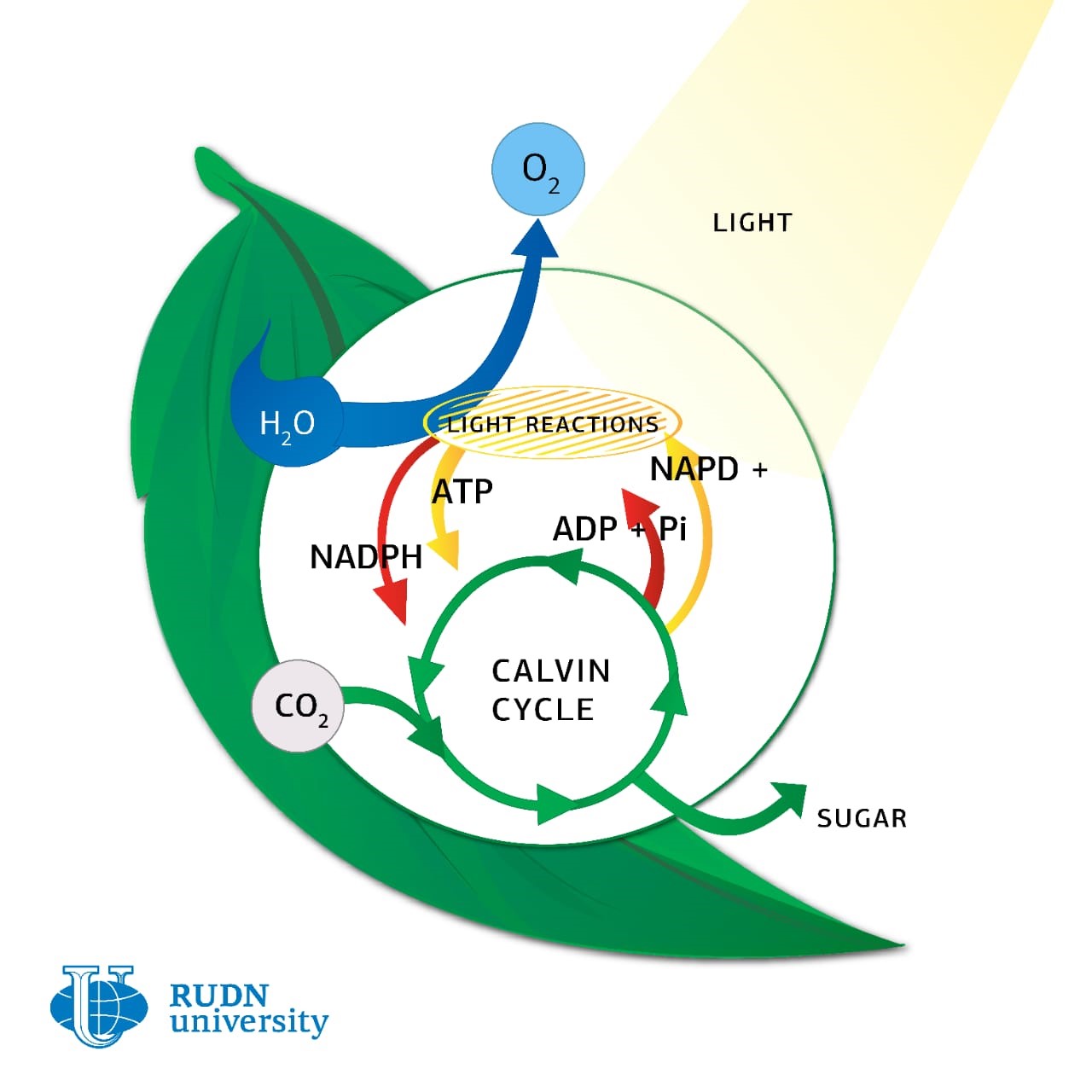RUDN University biologist developed new model for analyzing photosynthesis in vivo

Measurements of the efficiency of photosynthesis in living systems are necessary because they allow us to estimate the carbon cycle, and therefore the impact on the climate. To study photosynthesis in vivo, the vegetation absorption coefficient is used – a value that shows how deep the incident radiation penetrates the canopy. It depends on biochemical, structural and external factors, so its evaluation is very difficult. Alexei Solovchenko, an employee of RUDN University, and his colleagues from the USA and Israel have found a new way to assess this indicator.
First, biologists calculated the ratio of absorption and transmission coefficients for individual leaves and canopy in general. Measuring these coefficients for the canopy “in sum” is difficult, but for a single leaf it is simple, so knowing the ratio between them, you can calculate the absorption and transmission of canopy, knowing the coefficients for a single leaf. Then the researchers of RUDN University obtained an equation that connects the canopy absorption coefficient to the pigments absorption coefficient – primarily chlorophyll – in leaves. It turned out that the canopy, unlike a single leaf, can absorb light in the infrared range, and also, the absorption coefficients of pigments for plants with different densities of canopy, may differ. Therefore, biologists had to make appropriate changes to the final model.
The researchers tested this mathematical model describing the canopy absorption coefficient on crops with different types of photosynthesis – corn (C4 photosynthesis), soybeans and rice (C3 photosynthesis), measuring the spectra of absorbed and reflected solar radiation.
The model showed that in the blue spectral region, the canopy of rice reflects more than the canopy of other crops. Scientists believe it is because rice grows in water. Also, absorption curves for plants with C3 type of photosynthesis (soybeans and rice) obtained with the model differed from those of plants with C4 type of photosynthesis (corn), due to biochemical differences.
Thus, the model created by biologists can "predict" the absorption of light by different types of plants with different types of photosynthesis, different canopy architectures and different pigment content in the leaf.
The article was published in Remote Sensing of Environment.
The RUDN University Science and Innovation Prize winners were honoured at the extended meeting of the Academic Council. In 2024 the terms of the traditional RUDN University Prize were changed: for the first time the competition was announced in two categories: leading scientists and young scientists.
According to the International Energy Agency (IEA), electricity consumption in Africa has increased by more than 100% over the past two years (2020-2022). However, 74.9% of this energy is still produced by burning organic fuels — natural gas, coal and oil. At the same time, the level of electrification on the continent remains extremely low — only 24%, while in other developing countries it reaches 40%. Even in grid-connected areas, electricity supply is often unreliable: industrial enterprises lose energy on an average of 56 days a year.
Today, diagnosis and treatment planning with orthodontists takes several days. Also, complications can arise during treatment that slow down the patient's recovery process. For example, improper orthodontic treatment planning can lead to temporomandibular joint dysfunction.
The RUDN University Science and Innovation Prize winners were honoured at the extended meeting of the Academic Council. In 2024 the terms of the traditional RUDN University Prize were changed: for the first time the competition was announced in two categories: leading scientists and young scientists.
According to the International Energy Agency (IEA), electricity consumption in Africa has increased by more than 100% over the past two years (2020-2022). However, 74.9% of this energy is still produced by burning organic fuels — natural gas, coal and oil. At the same time, the level of electrification on the continent remains extremely low — only 24%, while in other developing countries it reaches 40%. Even in grid-connected areas, electricity supply is often unreliable: industrial enterprises lose energy on an average of 56 days a year.
Today, diagnosis and treatment planning with orthodontists takes several days. Also, complications can arise during treatment that slow down the patient's recovery process. For example, improper orthodontic treatment planning can lead to temporomandibular joint dysfunction.